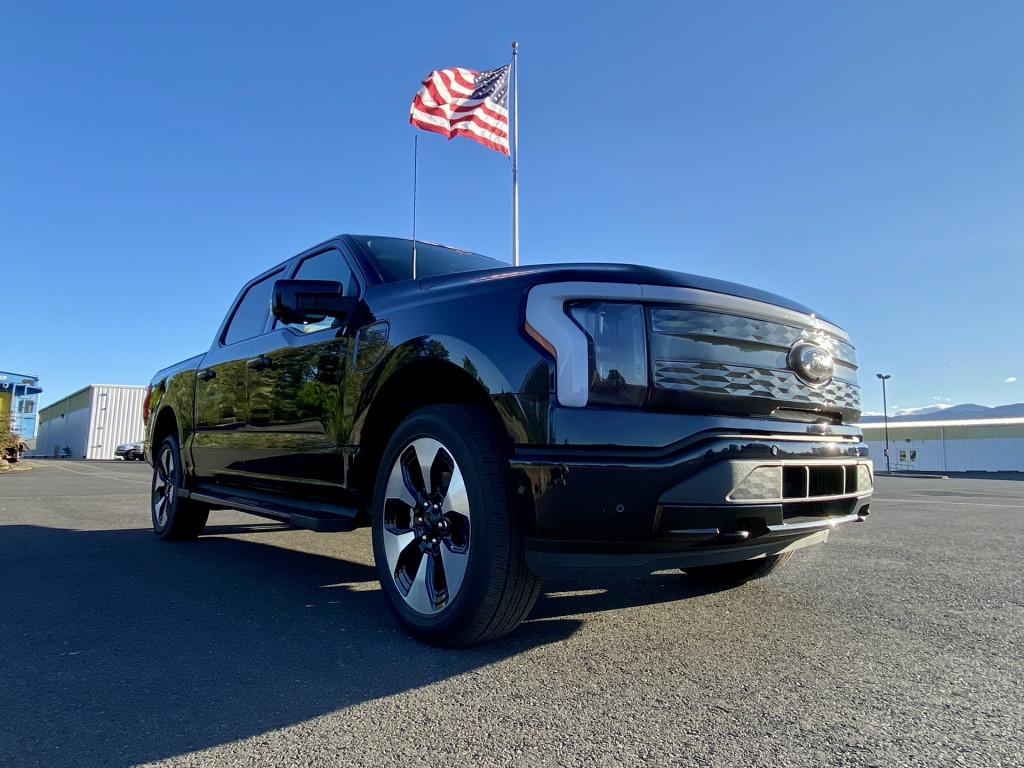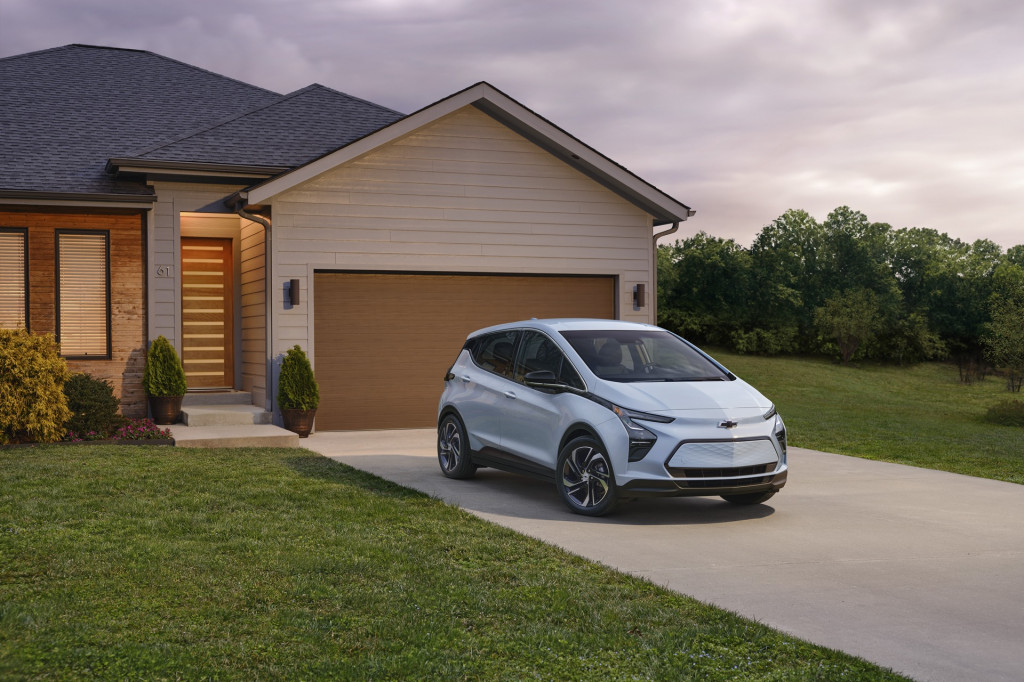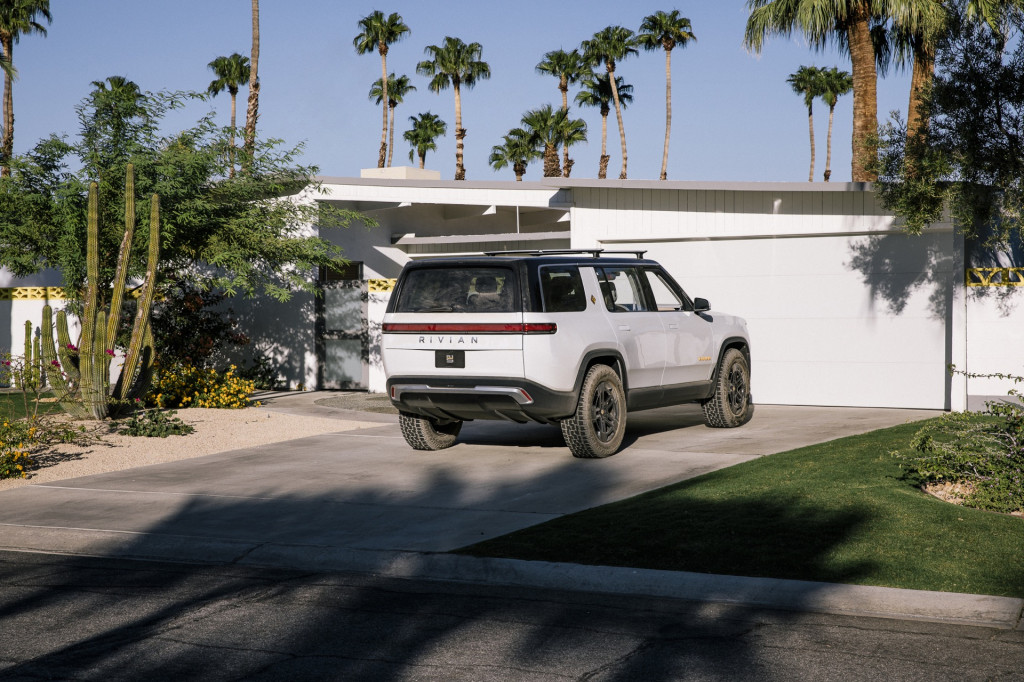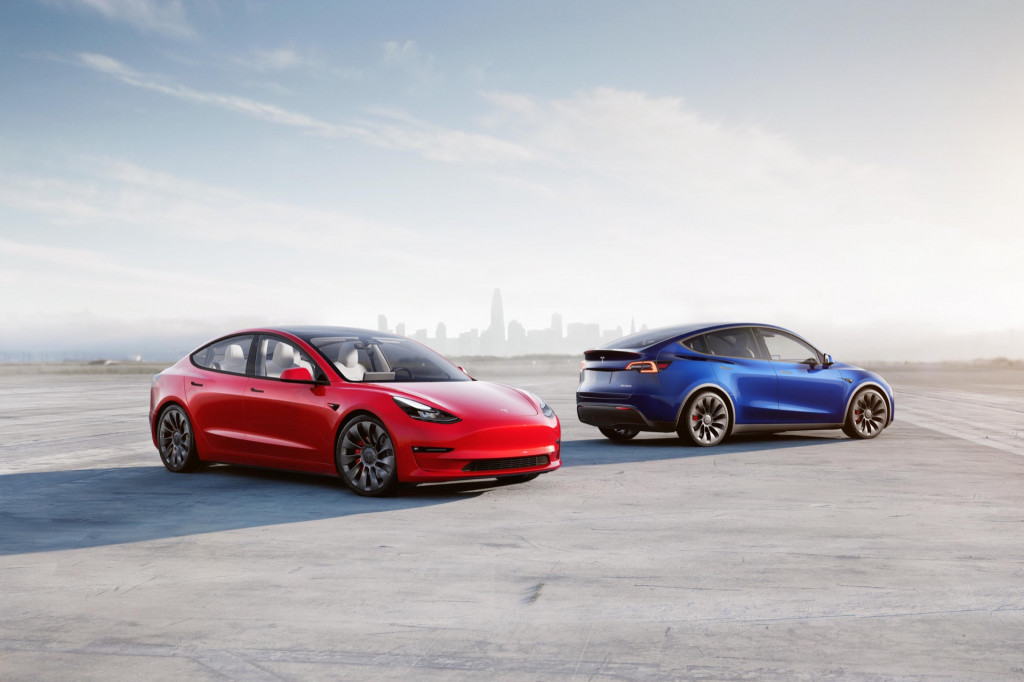If you want to get a new electric vehicle this year, the rest of this month is likely to be a confusing, tense time.
Friday, the House passed the Inflation Reduction Act (IRA), which includes about $370 billion in energy and climate investments. And while a big piece of that is great news—setting up our supply chain for domestic battery production and many more American-made EVs in the near future—the revamped EV tax credit that serves to sweeten the deal for vehicle shoppers isn’t going to seem so sweet for a little while.
That’s because the moment President Biden signs the legislation later in the month, the former version of IRS tax code 30D is no longer valid.

2022 Ford F-150 Lightning
The new legislation is written with no provision extending the “old” EV tax credit to all purchases for the rest of the year. Meanwhile, the IRA legislation lays out stipulations on critical minerals, battery sourcing, domestic-content thresholds, and vehicle assembly that the Treasury Department will need to define before placing a “new” 30D into effect for tax year 2023.
ZETA, a policy and advocacy group representing electric vehicle makers, charging networks, hardware suppliers, battery makers, utilities, and all the industries making and supporting EVs, doesn't see this as a quick turnaround. Based on its reading of the bill and conversations with administrators, it does not expect the EV tax credit to be available for the average consumer until 2023, it confirmed to Green Car Reports Thursday.
The group estimates that the timeline of the bill on the way to the President’s desk buys shoppers about two weeks from today.
The tax credit goes away for the rest of the year—probably
Contrary to what’s been reported elsewhere, there is no special provision to retroactively apply to electric vehicle purchasers for the rest of 2022. Under the revised credit, certain vehicles that currently qualify for the credit soon won’t due to new MSRP caps.

2023 Chevrolet Bolt EV
Essentially, the IRA killed some of the market this year so it could flourish in the future—with the addition of a $4,000 credit on used EVs (costing up to $25,000), a tax credit of up to $40,000 for “clean commercial vehicles, and a significant expansion and retroactive extension of the 30C credit that will give households a break on charging equipment.
As we’ve covered, the lift of the cap—and an extension of the 30D tax credit to 2032—will drop the 200,000-vehicle cap allowed for eligible vehicles from each vehicle maker. That means vehicles from Tesla and GM could be fully eligible, if they can comply with the supply-chain requirements.
Caught in transition
But there is one exception, called the Transition Rule that could help more people claim the credit—albeit in a way that could be a wash based on dealer markups.
As the bill lays out (on page 394), the Transition Rule allows the previous tax credit to only those taxpayers who “before the date of enactment of this Act” have “purchased, or entered into a written binding contract to purchase, a new qualified plug-in electric drive motor vehicle” and placed it in service on or after the passage of the act.
That will hinge on state rules regarding purchases, which vary somewhat on what is considered legally binding in a vehicle purchase. In most cases, if not all, a deposit that is also considered a down payment toward final delivery of the vehicle is binding, but a pre-order deposit to get in queue is not.
Get ready for a run
That could lead to quite the run over the next week or so, as EV shoppers rush to complete their purchase. For startups such as Rivian, Lucid, or other EVs with long waiting lists, deposit holders may push to spec vehicles and put money down.

Rivian R1S
Then, what’s coming at the start of the new year isn’t entirely clear. According to the Alliance for Automotive Innovation, another trade group that represents the vast majority of automakers selling vehicles in the U.S. market, about 70% of the EVs currently sold in the U.S. will no longer be eligible for the revamped credit at all under the phase-in of sourcing requirements.
“The $7,500 credit might exist on paper, but no vehicles will qualify for this purchase incentive over the next few years,” Alliance CEO John Bozella argued in a recent blog post. “That’s going to be a major setback to our collective target of 40-50% electric vehicle sales by 2030.”
The Alliance has argued that the credit is requiring this supply-chain transformation faster than it might be possible. “Again, we share the goal of increased domestic capacity and supply, but the requirements ought to be an inducement to industrial base change—not unattainable and punitive to consumers,” said Bozella.

2022 Kia EV6
That’s all a moot point now. There are effectively no chances that the bill will be changed significantly. Extending the Transition Rule, or making any date change in the bill would likely require another vote. That’s something Senate Majority Leader Schumer, who worked hard for the votes of Sens. Manchin and Sinema, will likely avoid at all costs—because of continued resistance from Republicans on the bill, despite bipartisan support for such measures in polling.
Point-of-sale coming a year later
The bill also added maximum-household-income and maximum-MSRP requirements for tax-credit eligibility. And it provides an extra year for point-of-sale details to be applied, establishing a “transfer of credit” set to start for vehicles placed in service after December 31, 2023 that will allow shoppers to claim it at the dealership, with dealerships acting as an intermediary.

2022 Tesla lineup (Courtesy of Tesla, Inc.)
This will be a more convenient credit, available to more of the EV-buying public, if you consider buyers of the Tesla Model Y and Model 3—well over half of the U.S. EV market—once again becoming eligible. But it will require marketing to be recrafted, car-buying advice to be recast and, for some automakers, entire business plans to be changed.
.@Ford statement supporting the #InflationReductionAct
While its consumer tax credit targets for electric vehicles are not all achievable overnight, the bill is an important step forward to meet our shared national climate goals and help strengthen American manufacturing jobs. pic.twitter.com/NQFYCovdpC
— Melissa Miller (@Meliss1001) August 11, 2022
No companies have yet made comprehensive statements regarding where this leaves the EV tax credit for the rest of the year. Ford on Thursday applauded the bill as it headed into the House, so Green Car Reports has reached out on how it sees the credit working from this point forward.
Only one way to clarity
The tax credit—and peace of mind on whether shoppers will be able to claim it—isn’t likely to return until the Treasury Department confirms how vehicles will be seen as eligible or not, by early next year. It could feasibly put out a guidance before that, ZETA suggests, but that’s unlikely as the bill lays out that the domestic content and supply-chain rules start taking effect immediately.
People will keep buying EVs through the end of the year—and, perhaps, it might help some brands catch up with demand. But if you consider the record-scratch moment that this legislation inadvertently creates, it’s going to be a very confusing time for shoppers who just decided to get an EV.
--
UPDATED at 5:30 p.m. ET to reflect House passage.













